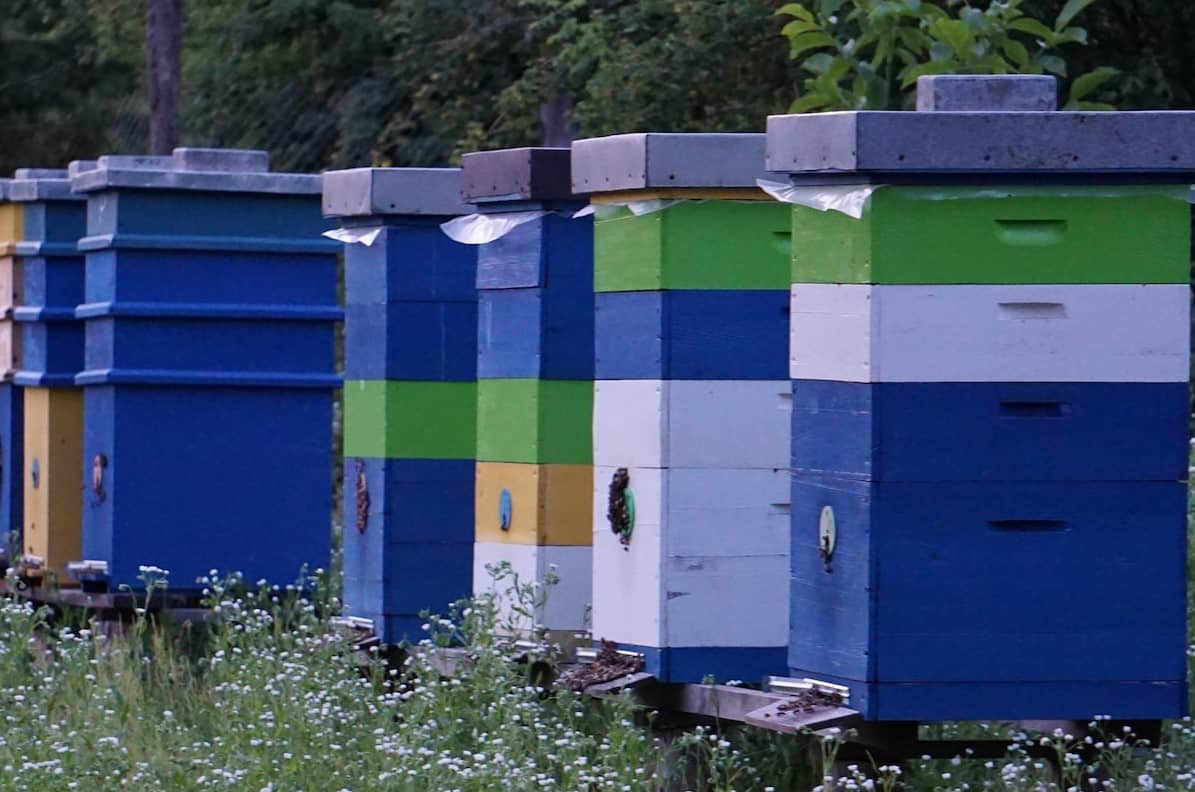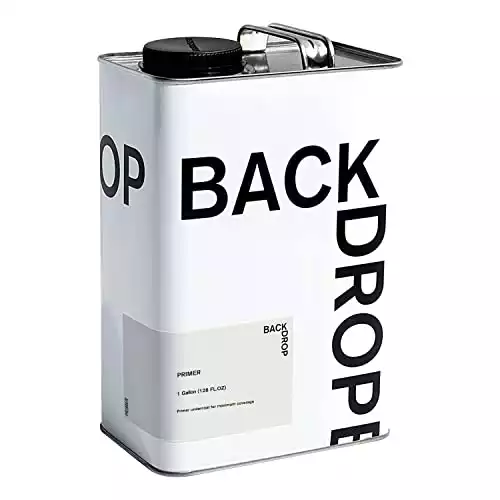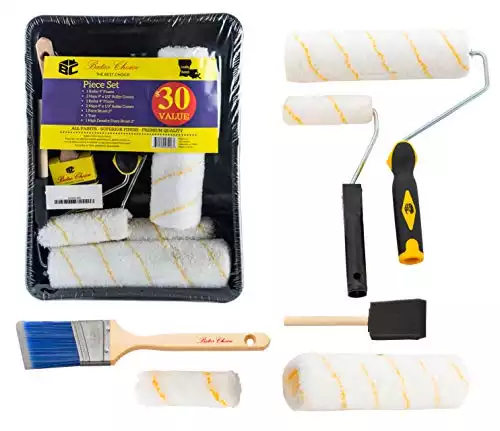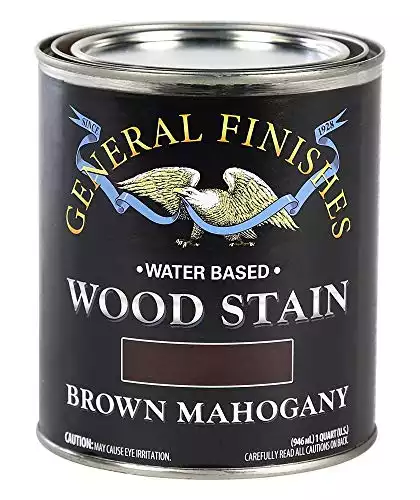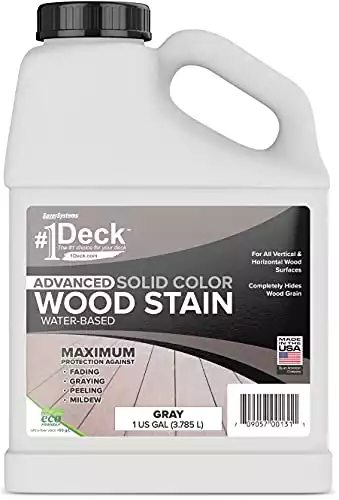Welcome to the only part about beekeeping that’s all about you; how to paint your beehive. All your other inquiries will have to do with the bees.
Why aren’t my honey bees visiting my pollinator garden? Why can’t I see any brood? And why aren’t the bees feasting on the sugar buffet I laid out for them? The list goes on and on. This segment is all about you, the beekeeper.
Even though bees are capable of appreciating color, they don’t really care about the color scheme you’ve chosen for landscaping your yard.
Whether the color of the painted hive clashes with the patio is really not their concern. They spend most of their time foraging and doing domestic chores in the dark, so the color of the hive isn’t on their list of priorities.
It can be on your list, and you’ll soon learn why. Plus, we’ll also cover how beekeepers paint beehives successfully.
Should You Paint Your Beehive?
Yes. Must you? No.
Painting hives is the least of your bees’ concerns. The honey bees only care that the hive is warm, safe, and non-toxic.
How Adding Paint Affects and Enhances Your Beehive

There are 3 things that painting beehives can help with — longevity, eye candy (appearance), and camouflage.
Longevity
Whether you built it or bought it, you need it to last as long as possible. You want it to withstand whatever Mother Nature throws at it. If it was still a tree, it would have its bark for protection.
Painting a beehive helps with wood preservation. Without natural protection, you need to provide a force field to protect it from rain that can accelerate wood rot.
Eye Candy
We love the external before we get to know the internal. We are wired like that, and there’s no shame in it.
There are some gorgeous works of art masquerading as bee hives out there, and fortunately, the external appearance doesn’t hamper the productivity of the colony at all.
The bee boxes are your canvas. If you have an artistic hand, have a go at it.
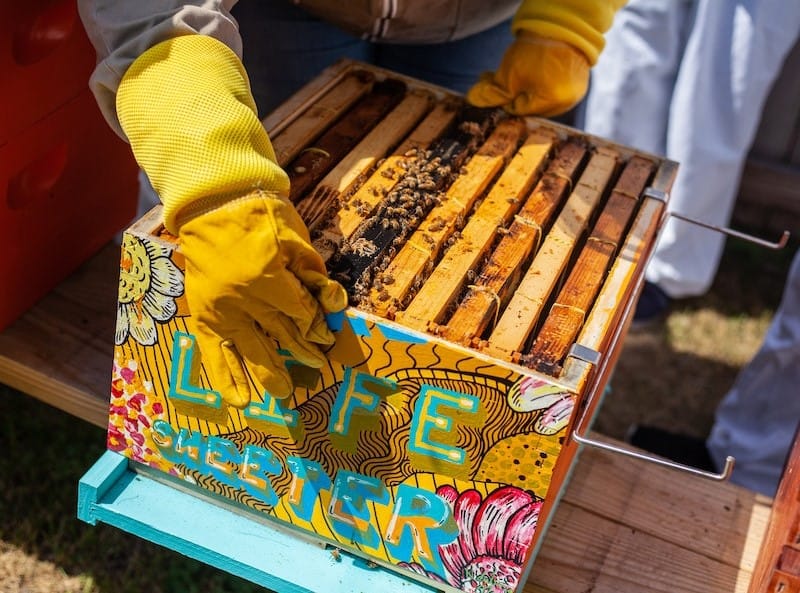
Camouflage
Perhaps your nosy neighbor thinks your hives are a threat to her safety, her family, her neighborhood, and when she can prove it, National Security.
It would be in your best interest to have a beehive that doesn’t stand out. In most cases, people carry out campaigns when they see the hives. If your hives blend with nature, you might just get lucky with your neighbor not noticing. Out of sight, out of mind.
There are those who don’t believe in painting their hives, and they are happy with their decision.
You’ll find their comparative advantage is that they save the time they would have spent to paint a beehive.
However, their choice of hives does take a beating and may need replacement sooner than yours would.
What Color Should You Paint Your Beehives?
The color that you paint a bee hive doesn’t really matter. Choosing paint colors would be your prerogative, not your honey bees.
Most commercial beekeepers have their hive bodies painted white. It’s simple and allows the reflection of the sun’s warmth and light, which aids in keeping the interior of the hive cool.
All light colors will serve the same purpose. If you live in a particularly warm area, you’ll want to avoid darker colors. Icy states can embrace their browns, blacks, and aubergine hues.
The hives don’t have to be just one color. You could paint a mural on the hive. There are beliefs that painting hives with unique patterns will keep the bees from drifting.
Sometimes, bees can have a challenge finding their hive when all hives in the apiary are relatively close together. All the pheromones mix up in the air, and zeroing in on their true home becomes an unfortunate game of ‘Where’s Waldo?’
They have been found to drift toward the hives at the end of the line. A particularly colorful painting of
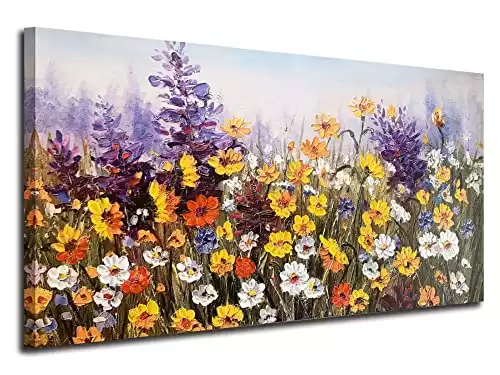
If you prefer the natural look of the wood grain, you could opt to simply use a
You’re also unlikely to get two hives that look exactly the same. If you live in a woody area, the clear coating would be the best camouflage.
How to Paint a Beehive Step-by-Step
We’ve broken down the painting process of your beehive into 5 easy-to-follow steps.
Step 1: Assemble the Hive
Hive assembly is only necessary in the event that your hive comes in parts that you have to put together, especially the hive boxes. You are only interested in painting the exterior surfaces of the hive.
Make sure you have glued and screwed all the box joints together before you begin.
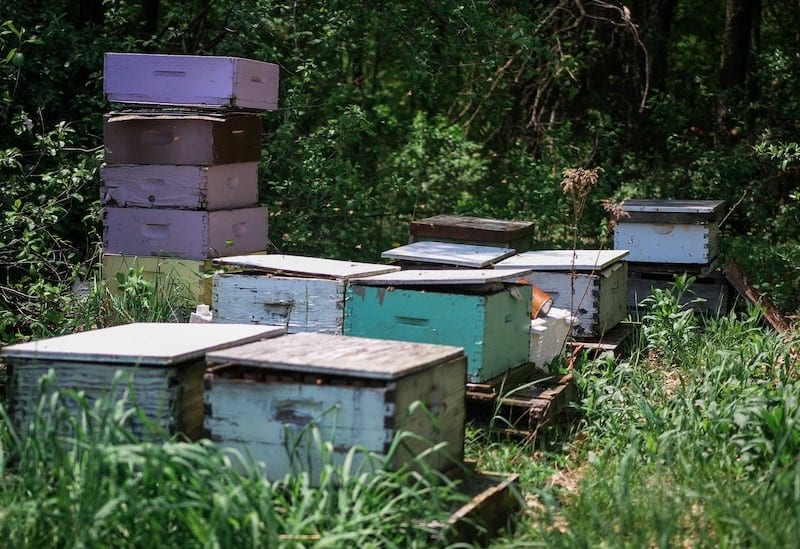
Step 2: Assemble your Tools
In order to ensure that your paintwork isn’t smudged or uneven, you will want to suspend the box that you are painting.
That way, no section of it is in contact with a surface that could cause smudges or accidents. It also allows the outer surfaces of the box to dry evenly.
Prepare your makeshift suspension mechanism. That could be a broom that extends over two work surfaces, nothing complicated.
Ensure you have your roller/paintbrush, your paint, or get a
Step 3: Prepare the Box’s Surface
If the box is old and is going to be repainted, you need to prepare the box’s outer cover.
Old chipped paint needs to be scrapped and sanded from the wood surfaces before new paint can be applied. Carry out any repairs as well before you begin.
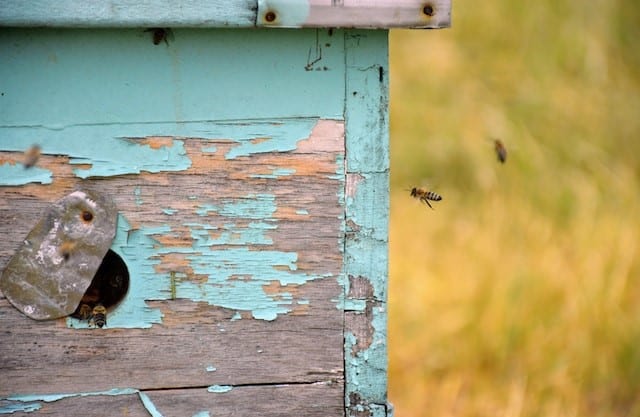
Step 4: Apply Your Primer Coat
This undercoat can be any color. It helps to ensure that your paint job lasts longer by providing a smooth layer that your topcoats will adhere to.
Step 5: Brush Off.
If you have settled on one color for your hive, then you can proceed with the application. However, if you have a more elaborate design planned, use a pencil to sketch your design onto the box and then bring out the paints.
If freehand isn’t your thing, you can cheat a little and use a

A Rhyme to Help You Remember What Parts of a Hive You Can Paint
If you can see it from the outside,
Paint it fast. The bees won’t mind.
On the inside, they keep their bread,
Paint-flavored honey, you will dread.
The only exception to this rule is the entrance reducer. It is best to leave this unpainted.
There are those who prefer not to paint the rims of the hive boxes, which come into contact with other boxes when they are stacked up.
Sometimes, the paint can cause the boxes to stick together. Others still have no such problems.
They say as long as the boxes have had enough time to dry properly, the boxes don’t get sticky. The decision is up to you.
The surface area of the rim is quite small, so painting it won’t significantly affect the durability of the box.
Could You Paint a Beehive With Bees Inside?
Imagine you and the family settled at the table for dinner. Everybody’s phone is off, and you start your daily ritual of telling everyone else the highlight of your day.
Imagine that someone is trying to drill a hole in the dining room floor with a jackhammer. That’s what I think it’s like for bees when a very strong smell infiltrates the hive.
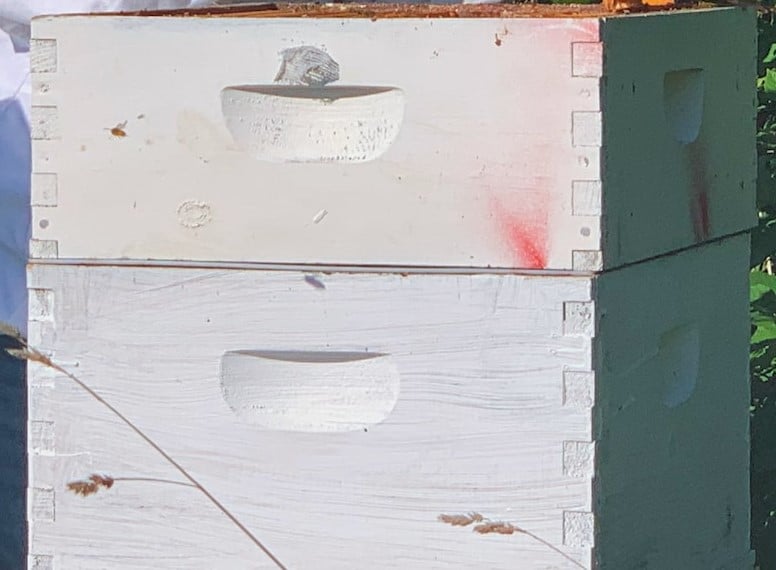
Painting the Inside is Likely to Overwhelm The Odor Senses of Bees
They communicate using pheromones, and paint is likely to overwhelm their odor senses, making it difficult for them to communicate and likely to anger them.
Even though the surfaces being painted are strictly external, the fresh paint smell will linger for a while until the surface is completely dry. That said, there are varied reports on this.
Many beekeepers comfortably paint their boxes in the summer, and the bees appear unperturbed by the paint. Yet another noticed the bees chewing up the paint and disposing of it.
Move the Bees to Another Box Before You Paint
Since I can barely stand the smell of fresh paint, I think it is prudent to move the bees to a different location in another box as you paint.
You really can’t have too many boxes anyway, so there’s a guarantee you are going to use an extra box at one time or another.
Moving the bees can be a little tricky, and you have to be extremely careful not to kill the queen.
Ensure that you constitute the hive in the same way the bees had in the old hive. Keep the brood in the center and flank it with the honey stores and stored bee bread.
If you don’t manage to spot the queen during the move, you will want to keep an eye on the hive to ensure that she is still alive and well. You can check in after a week or two to look for the presence of eggs and uncapped brood.
Once you’ve painted your boxes, you don’t need to transfer them back to the newly painted box. That can be kept ready for a new colony.
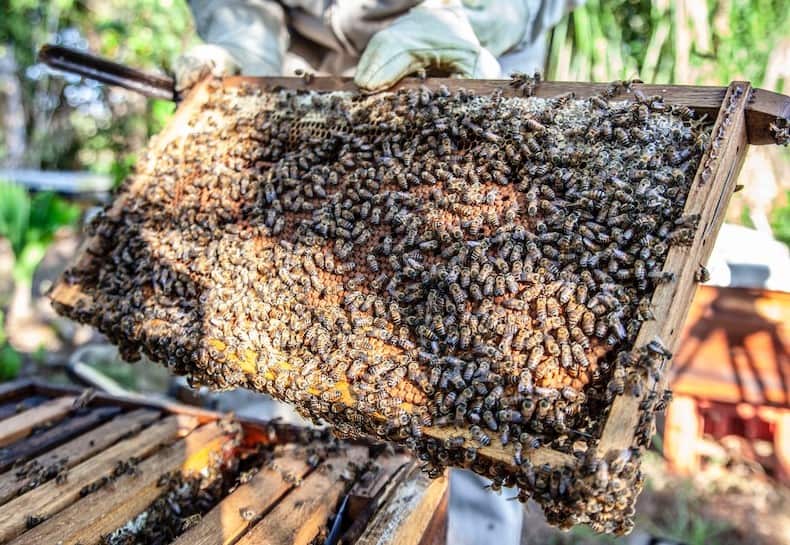
What Kind of Paint to Use on a Beehive
Even though your primary reason for painting the hive is for your own comfort, you want to ensure that your bees remain safe.
Even though the paint is on the outside, the bees can come in contact with it, so you want to keep the toxicity of the paint to a complete minimum.
The following three types of paint are best and safe for beehives.
External Paints
First of all, you want to pick
Most people will go for paints that are on sale in the hardware stores, sometimes known as the ‘oops’ paints.
You will have to ensure that your hive boxes are completely dry before installing a colony. This is why most beekeepers will only ensure that the paint is for external use and nothing more.
VOC Paints
If off-gassing is your concern, then you will go for the
Low VOC paints tend to be water-based and dry more quickly. Therefore, water-based paints are seen to be less toxic than oil-based paints. Water-based paint, also known as latex paint, can be added to the checklist when analyzing your ideal choice.
Stain or Clear Coatings
If you prefer the natural look of the wood, you could choose stain or clear coatings.
Some of these are also Low VOC and are friendlier to the bees with reference to off-gassing.
Don’t agonize too much over the best paint to use, though.
The most important thing is to get one made for external use and give it ample time to dry before installing the bees.
Don’t make painting your hives a last-minute decision.

Should You Paint the Inside of Your Hive?
No! You should not paint the inside of your beehive.
Bees are just suckers for natural products. When you use plastic foundation, what do the bees do? They coat your artificial plastic with their natural wax and then use that as their base to draw out the comb.
So, you can imagine how they would feel about being surrounded by an unnatural coating. They will probably attempt to chew it off and dispose of it.
That is not healthy for them, and it is completely unnecessary for you. You will waste paint and time, and your work will go unappreciated in the dark interior of the hive.
Furthermore, the bees polish all the surfaces with propolis, which disinfects the hive. The natural wood is able to absorb some of the moisture from their respiration, which helps to regulate the environment inside the hive.
As you know, honey does absorb flavor, so the last thing you want is acrylic-flavored honey. Keep the internal part of the hive as close to its natural habitat, say, the hollow of a tree, as possible.

Conclusion
To paint or not to paint isn’t the most fundamental question. It’s simply a choice.
Should you choose to, that’s the one thing in beekeeping you will have complete control over. You only need to take care that your creative flair doesn’t harm the bees.
You do this by ensuring that the painted surfaces are outside the hive and, where possible, keeping the toxicity of the paint to a minimum. That’s all there is to it.
Happy Painting to you.
